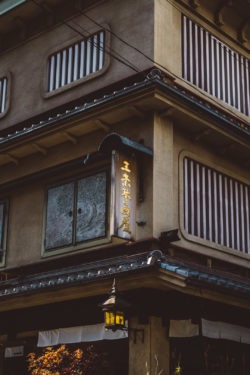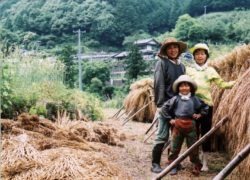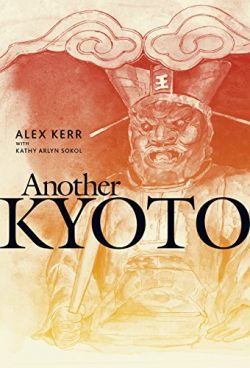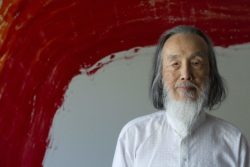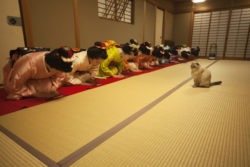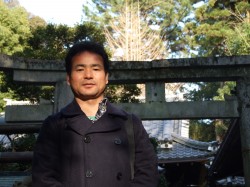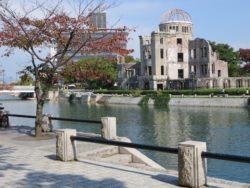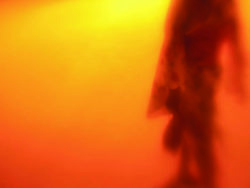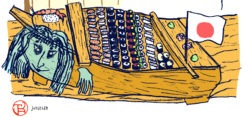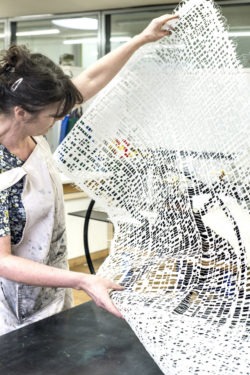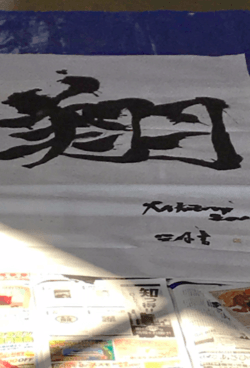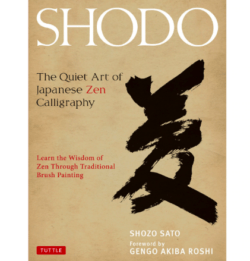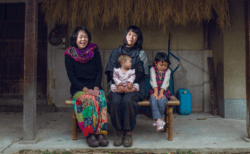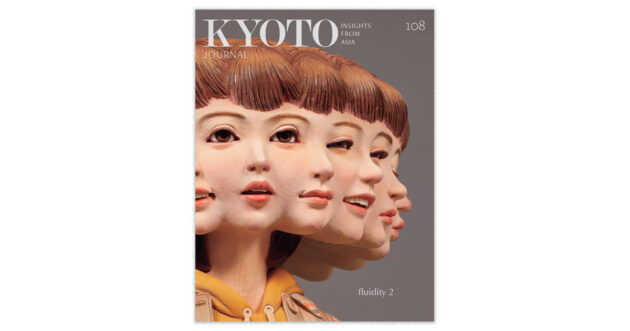Somushi: The Story of Kyoto’s First Korean Teahouse
“I wanted to create a space where people could have their senses stimulated by using natural material all around. At the start, I purposely didn’t put up signs for the restrooms, nor did we have a menu. I wanted people to use their instincts and figure stuff out — to think before immediately asking for what they wanted.”
Read MoreMaking a Life—Not Merely a Living
“I think all mature people know they have to live with some level of contradiction, especially in our current society. The question is: how do you use your own creativity and resourcefulness to provide for your needs without relying entirely on the cash economy?”
Read MoreKazuki Takizawa’s Color From Green
While KJ is not primarily a literary publication, poetry has always been a vital component in our content mix. This poem by Elena Karina Byrne, along with others by Jane Hirshfield, Arkaye Kierulf, Tamara Nicholl-Smith and (in translation) Shinkichi Takahashi, is featured in KJ 95 (Wellbeing).
Read MoreDream Landscapes in 3D: An excerpt from Another Kyoto by Alex Kerr
Another Kyoto is a “spoken” book which resulted from conversations between Alex and Kathy Arlyn Sokol as they explored temples and gardens over the years.
Read More“We all have a brush”
“In Aikidō, the other guy may be big and strong, and you may be thrown down. But you have a chance to throw down the opponent, too. We had the nuclear arms race, that was probably the worst scenario of global collective suicide that we had faced as humanity, and we reversed it.”
Read MoreCapturing Wellbeing: Behind the Scenes of the KJ95 Cover Shoot
Sisters Reylia and Johnna Slaby, interviewed for KJ95: Wellbeing, were tasked with creating a stunning cover in a collaborative work of photography and painting.
Read MoreFor the love of neko
The Neko Project is a book that pays homage to Japan’s unyielding love of cats through its thoughtful and expansive photography. It is the result of an open call to their network of Japanese photographers on the theme of cats and features all the projects that were submitted, alongside historical anecdotes and insightful commentary in both French and English.
Read MoreSurrounded by Trees
When I was six, I developed a grass-like skin disease around my neck after my family and I visited a hilly area in Tagaytay. My grandfather, Tatay Marcial, who believed it was a punishment from a naughty dwende (elf), warned me against expressing my admiration for plants, especially those that grow in the wild.
Read MoreExiled – A Tibetan’s Tale
“I was concerned about the many differences between India and China — the ways of thinking, for one — and India was not really up to confronting China. If I stayed in India, maybe I wouldn’t be able to do the kind of things I really wanted to do to help Tibet.” He eventually set his sights on Japan, with its own brand of Buddhism and spirituality, as his next home in exile.
Read MoreLuck or Curse? The Stories of Two Hibakusha
“I worry somewhat that people in this country still think that by dropping those bombs we hastened the termination of the war and also saved a million lives of soldiers. I’m a little worried about that perception.”
Read MoreRe-opening Our Eyes
Naoyuki Ogino describes his work as “…documentary in the broadest sense. I am trying to omit fiction as much as I can in order to capture the very moment of non-fiction. I want to document …people, within their histories, societies, cultures, neighborhoods, atmospheres, environments or weather.”
Read MoreConfessions of a Sushi Boat
I’m so tired of them washing me, or not washing me properly. The grains of rice tend to get stuck between my wooden planks. But when Chef Jiro Sakamoto does it, it’s always different. He gives me proper care and attention, pays heed to the details of my grooves and curves…
Read MoreInspired by Japan
A look at the work of foreign artists inspired by Japan: Denis Guidone, Elaine Cooper, Alessandro Bellegarde, David Stanley Hewitt and Deborah Davidson.
Read MoreCold War Modern and the Nagasaki Triptych
The English-speaking world had had to wait 35 years for the writings of the only trained Japanese scientific observer of the effects of atomic devastation.
Read MoreA Familiar Environment
“Women authors in Japan are more or less par for winning the big prizes, and they’re publishing easily as much as men, but they’re not appearing in translation. There’s a movement to try and do something about it.”
Read MoreMastery of Movement
Shodō is the Japanese word for calligraphy. It means not just penmanship, but the Way, or Path of writing. In China and Japan, Shodō has long been regarded as one of the most important forms of art.
Read MoreKJ Summer 2019 Reads: Titles from Tuttle
As part of their 70th-year anniversary celebrations, KJ has teamed up with Tuttle Publishing, the Asia specialist, for this four-part series.
Read MoreMemory and Empathy in a Japanese School Lunch
This March 11th, as in recent years, schools throughout the country honored lives lost and a region destroyed through special meals which acknowledge loss and endeavor to strengthen community. The meals are a unique ritual for students to explore insecurity and encourage empathy.
Read MoreTumbling Assumptions
The author says she embarked on this year in Japan in order to undertake a spiritual practice of her own. She must occupy herself while her husband seeks Soto Zen priestly credentials by training in a nearby monastery, so she joins a pottery class as a deshi (disciple) of the elderly female teacher. But she cannot seem to make the dirt and water come together to make a smooth clay, either physically or metaphorically.
Read MoreKyoto Women Entrepreneurs: Kumakura Seiko
Kumakura Seiko first worked in theatre to increase awareness of societal issues in an appealing way. As an activist and a mother she has since used her experience to launch trailblazing community projects in Kyoto.
Read MoreMeiji Poor
Huffman focuses his inquiry on the very poorest of Japan’s urban poor—the hinmin, or paupers, who flooded into Tokyo at a rate of up to 1,000 people each week in the late 1800s and early 1900s, victims of government policies that pushed farm families to starvation and forced their sons and daughters to seek jobs in the swelling cities.
Read More
